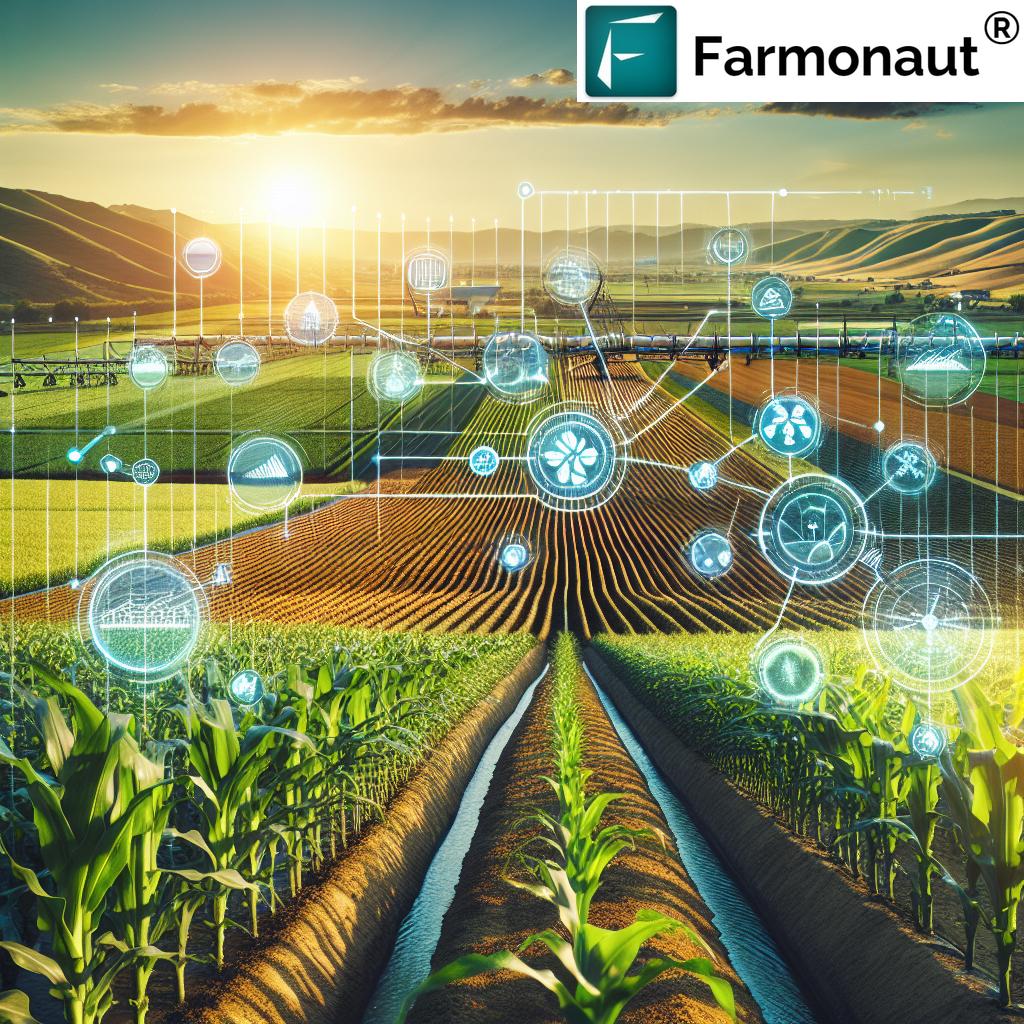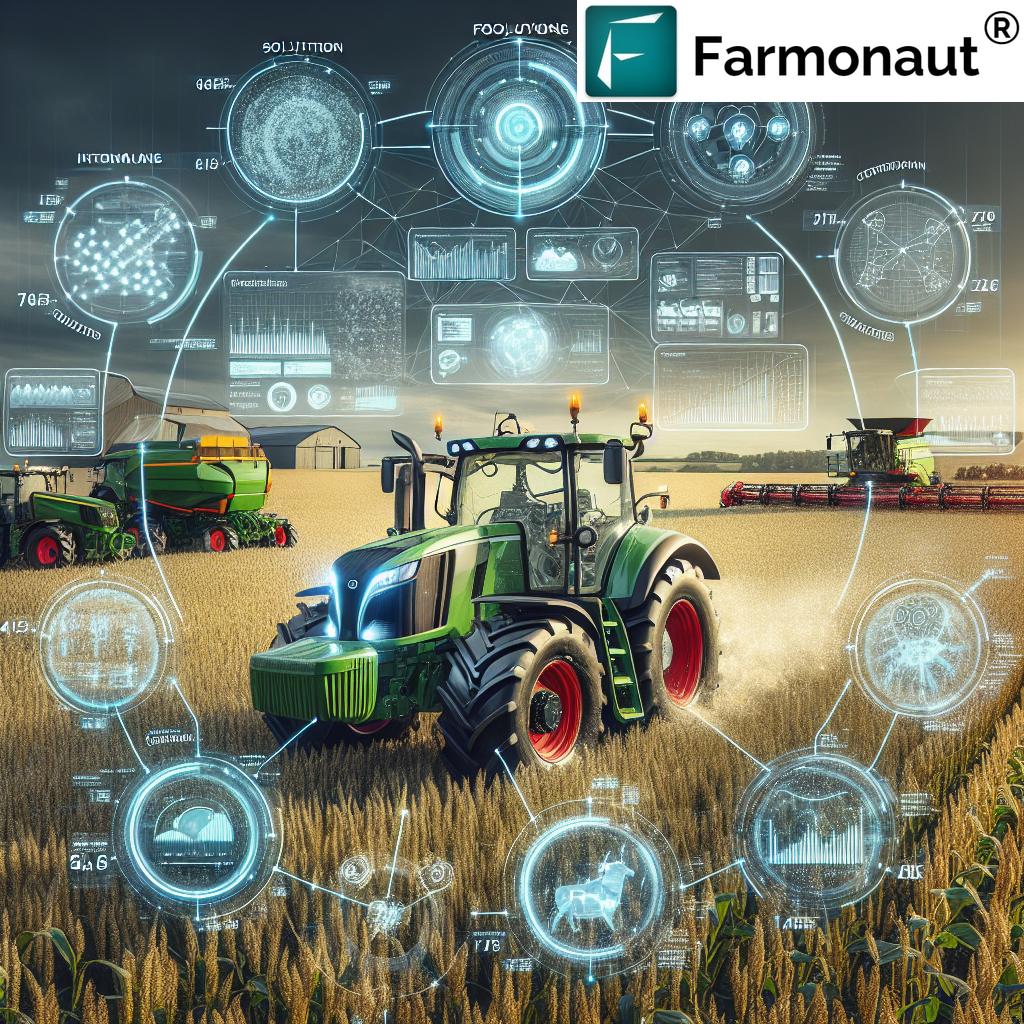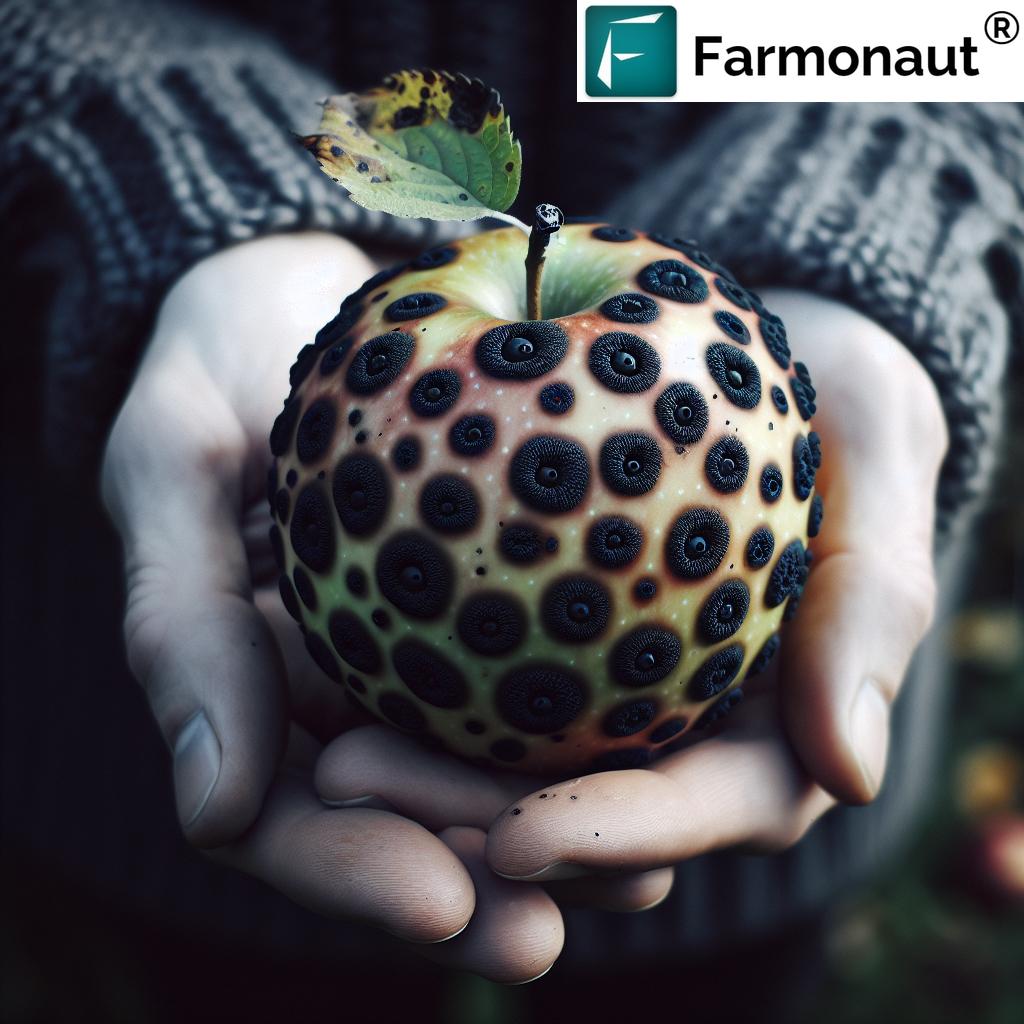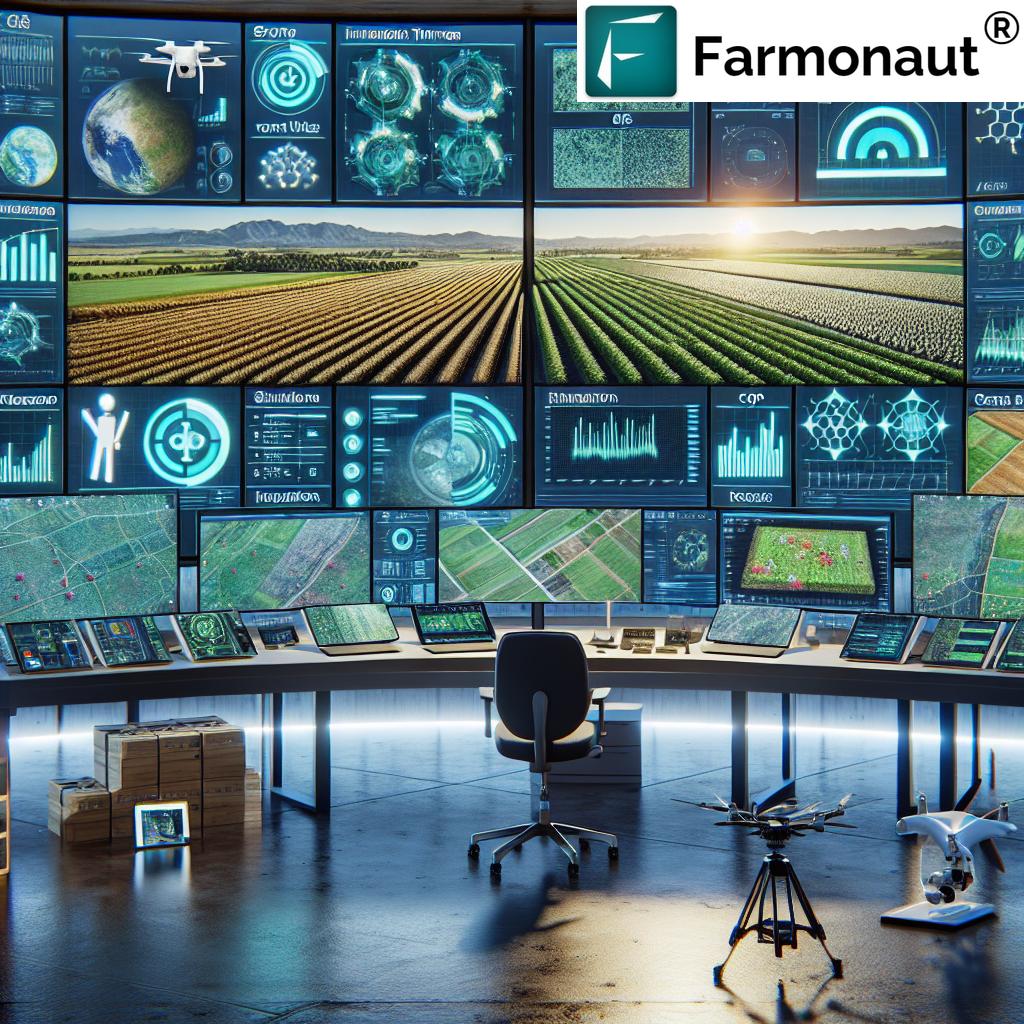- Introduction
- Why Farm Efficiency Matters in Modern Agriculture
- Hack 1: Precision Agriculture & Technology Integration
- Hack 2: Artificial Intelligence & Machine Learning in Farming
- Hack 3: Internet of Things (IoT) in Agriculture
- Hack 4: Robotics & Farm Automation
- Hack 5: Smart Irrigation Systems
- Hack 6: Agroforestry & Sustainable Practices
- Hack 7: Crop Rotation & Diversification
- Smart Farm Management Software: Your Central Command
- Comparison Table: Precision Agriculture Technologies & Efficiency Impact
- Farmonaut Technology Ecosystem: Making Precision Affordable
- How to Get Started with Farmonaut
- FAQ: Frequently Asked Questions on Farm Efficiency Innovations
- Conclusion: Paving the Way for the Future of Efficient Agriculture
Increase Farm Efficiency: 7 Precision Hacks Exposed
In today’s rapidly evolving agricultural landscape, farm efficiency is more than a buzzword—it’s a necessity. As the global population steadily rises, so does the demand for food production. Yet, we face the dual challenge of meeting this demand while promoting sustainability and minimizing environmental impact. At the heart of this transformation are groundbreaking technologies—from precision agriculture and artificial intelligence to IoT in agriculture and smart irrigation systems. Together, these tools are revolutionizing farming practices and redefining what’s possible on modern farms.
Why Farm Efficiency Matters in Modern Agriculture
As farmers, agribusinesses, and policymakers, we must recognize that enhancing farm efficiency is the cornerstone of global food security and sustainable development. Technological advancements and innovative resource management are now essential for:
- Producing more food on existing land
- Reducing input costs and waste
- Improving soil and crop health
- Reducing environmental impact and conserving resources
- Enabling data-driven decisions for optimal outcomes
In this blog, we unveil seven precision hacks—powerful strategies and technological solutions designed to boost your farm’s efficiency and sustainability.
Hack 1: Precision Agriculture & Technology Integration
What Is Precision Agriculture?
Precision agriculture is a holistic approach that leverages technology—including GPS, satellite imagery, IoT sensors, and drones—to monitor and manage field variability at an unprecedented scale. Through data collection and analysis, we make informed decisions on planting, irrigation, fertilization, and pest management.
- Increased yields: By addressing field variability, we deploy resources—water, fertilizers, pesticides—only where necessary.
- Reduced waste: Less over-application of inputs means both lower costs and improved environmental outcomes.
- Better crop monitoring with drones: Real-time imagery highlights crop health, soil moisture, and stress factors.
How It Works: A Practical Example
Let’s say we use Farmonaut’s satellite-based monitoring. Satellite NDVI imagery and soil moisture data provide insights that inform real-time interventions—if an area suffers drought stress, we can optimize our smart irrigation systems or trigger fertilization only in affected zones. This not only improves efficiency but also reduces environmental impact.
For enhanced, real-time crop monitoring using multispectral satellite data and expert advisory, explore
Farmonaut’s Crop Plantation & Forest Advisory platform. Optimize your planting and resource management with actionable data-driven insights.
Hack 2: Artificial Intelligence & Machine Learning in Farming
Artificial Intelligence in Farming: Smarter, Predictive, Transformative
Artificial intelligence (AI) and machine learning (ML) have become game-changers in agriculture. Through continuous analyzing of massive datasets—from weather patterns and soil health metrics to historic yields and field conditions—AI-powered models grant us:
- Yield prediction for better market planning
- Disease and pest detection via real-time image analysis
- Optimal planting times recommendations
- Automated farm resource management and risk assessment
Farmonaut’s Jeevn AI Advisory System takes field-specific satellite and environmental data to deliver personalized recommendations to each user, streamlining decision-making and improving both productivity and efficiency on every hectare.
AI Use Case in Practice: From Pest Detection to Input Optimization
Imagine our AI-driven platform detects early signs of pest infestation in a specific field section—before it spreads, we can direct robotic sprayers or targeted pesticide applications, greatly reducing chemical use and crop losses.
Interested in ensuring food traceability and building consumer trust with AI?
Dive into
Farmonaut’s Blockchain-Based Product Traceability.
Hack 3: Internet of Things (IoT) in Agriculture
How IoT Devices Streamline Farming Operations
The Internet of Things (IoT) connects physical devices on the field, pulling real-time data from sensors embedded in soil, irrigation lines, weather stations, and machinery. With strategic IoT integration, we can:
- Monitor soil moisture and automate irrigation decisions
- Track microclimate patterns on your farm for more accurate planting
- Remotely control systems such as fertilizer application, harvesting machines, or climate control in greenhouses
- Reduce resource waste, water, and labor costs
We find that deploying IoT in agriculture is one of the keys to making our farm systems smart and responsive, ensuring optimal crop conditions at all times.
Developers and agribusinesses can integrate Farmonaut’s satellite weather and field data directly via API:
Farmonaut API |
Developer Docs
Hack 4: Robotics & Farm Automation
The Power of Robotics in Crop Production
Robotic technologies are reshaping modern farming—the era of manual-only agriculture is quickly passing. By deploying autonomous machinery, we can:
- Automate planting, weeding, fertilizing, and harvesting
- Achieve more accurate sowing and harvesting through GPS-enabled systems
- Apply fertilizers and pesticides precisely, directly reducing waste and environmental impact
- Operate 24/7, maximizing field time during critical growth windows
This precision minimizes errors and repeats in field operations, making every hour and every input count.
Fleet Management for Efficient Operations
Managing a modern fleet of machinery is now easier and more effective. With Farmonaut’s Fleet Management solution, you can monitor, schedule, and route your agricultural machinery—leading to optimized usage, lower fuel costs, and improved operational efficiency.
Discover the benefits of integrated fleet management:
Farmonaut Fleet Management streamlines your vehicle tracking and farm resource logistics, ensuring safe, efficient, and cost-effective operations.
Hack 5: Smart Irrigation Systems
Efficient Water Management for Sustainable Crop Success
Water scarcity is one of the most critical challenges in agriculture. By deploying smart irrigation systems that use IoT-connected sensors, real-time weather data, and satellite-based crop monitoring, we can:
- Deliver just the right amounts of water to each crop section
- Reduce total water usage by up to 30% (without sacrificing crop yields)
- Maintain soil moisture at optimal levels for crop health
- Minimize runoff, leaching, and wastage
- Support climate-smart agriculture practices, ensuring sustainability
Utilizing Farmonaut’s satellite data for soil moisture tracking allows us to precisely time and automate irrigation decisions—especially beneficial for large-scale farm management.
Managing a large plantation?
Farmonaut’s Large Scale Farm Management platform empowers you to monitor every hectare, coordinate teams, and maximize water and input efficiencies across multiple fields.
Hack 6: Agroforestry & Sustainable Practices
Why Integrate Trees? Enhancing Soil Health, Biodiversity & Climate Resilience
Agroforestry—the inclusion of trees and shrubs within agricultural systems—offers multiple advantages:
- Soil fertility improvement through biological nitrogen fixation, organic matter additions, and soil health management.
- Erosion control and improved field microclimate by protecting crops from wind and excessive heat.
- Biodiversity enhancement and natural pest control by providing habitat for beneficial species.
- Carbon sequestration, directly supporting farm sustainability and climate change mitigation.
Many of us combine precision agriculture techniques with agroforestry practices to build resilient, productive, and sustainable farms. For instance, using satellite data to assess tree-crop interactions and optimize planting patterns for both timber and food crops.
Do you want to quantify and reduce your farm’s climate impact?
Farmonaut’s Carbon Footprinting lets you track emissions, implement reduction strategies, and document compliance for environmental certifications.
Hack 7: Crop Rotation & Diversification Techniques
Soil Health and Risk Reduction Through Smarter Planting
We know that repetitive planting of the same crop (e.g., corn after corn) causes soil depletion, pest buildup, and yield declines. Crop rotation and diversification tackle this by:
- Breaking pest and disease cycles, especially for crops like corn and soybeans
- Enhancing soil health by alternating nutrient users and replenishers
- Boosting soil fertility and structure—for example, legumes add nitrogen, improving the next crop’s yields
- Spreading market and climate risks across multiple revenue streams
- Improving long-term yields and reducing input costs (5–30% higher yields versus monoculture)
Modern farm management software—like the systems we find on Farmonaut’s platform—helps us plan effective rotations, monitor field variability, and adapt our strategies every season based on real satellite data.
Need reliable farm verification for crop loans or insurance? Farmonaut’s crop loan & insurance services enable faster, tamper-proof approvals using satellite-based crop monitoring.
Smart Farm Management Software: Your Central Command
Data-Driven Decisions at Your Fingertips
Managing a successful, efficient farm requires us to keep all critical data, planning, and analysis in one accessible place. Modern farm management software provides:
- Centralized hub for all field, crop, input, and financial data
- Integration with sensors, drones, and machinery for live updates
- Automated reminders and scheduling for key operations
- Insights on operational efficiency, resource use, and yield prediction
- Scalable access—track a single plot or thousands of hectares, all in real-time
By embracing smart software solutions like those offered by Farmonaut, we transform how we manage, monitor, and optimize every aspect of our farming business.
Comparison Table: Precision Agriculture Technologies & Efficiency Impact
| Technology | Core Function | Estimated Efficiency Gain (%) | Estimated ROI Timeframe | Sustainability Impact | Implementation Complexity |
|---|---|---|---|---|---|
| Precision Agriculture (Satellite & IoT) | Data-driven field monitoring; targeted inputs via sensors & remote images | 15–25% | 1–2 years | High | Moderate |
| AI & Machine Learning in Farming | Analytics for yield prediction, disease/pest detection, automated recommendations | 15–20% | 1–2 years | High | Moderate |
| IoT-Enabled Systems | Automated monitoring (soil, weather, crop); live data for field operations | 10–15% | 1–2 years | Medium-High | Moderate |
| Robotics & Automation | Automated tasks for planting, weeding, and harvesting | 20-30% | 2–4 years | Medium | Complex |
| Smart Irrigation Systems | Automated water scheduling based on soil/climate sensors and satellite data | 25–35% | 1–2 years | High | Moderate |
| Agroforestry Practices | Integrating trees/shrubs for soil, climate, pest, and biodiversity benefits | 10–20% | 2–5 years | High | Moderate |
| Crop Rotation & Diversification | Rotating crops, diversifying plantings for soil health & pest reduction | 5–30% | 1–3 years | High | Easy-Moderate |
| Farm Management Software | Centralized operations, data tracking, decision support | 10–20% | 1 year | Medium | Easy-Moderate |
Farmonaut Technology Ecosystem: Making Precision Affordable
As a pioneer in affordable, scalable agricultural technology, Farmonaut provides solutions that democratize precision farming for growers worldwide. Through a harmonious blend of satellite imagery, artificial intelligence, blockchain, and mobile-first design, Farmonaut enables us to maximize our farm efficiency regardless of scale.
- Satellite-Based Crop Health Monitoring: Real-time NDVI, soil moisture, vegetation indices, and stress alerts keep us ahead of problems.
- Jeevn AI Advisory: Personalized recommendations for irrigation, pest management, and planting—delivered to our mobile or web dashboard.
- Blockchain Traceability: Track crop flow securely from farm to fork, enhancing transparency and market value.
- Fleet & Resource Management: Optimize every machine, vehicle, and logistics task for efficient, low-cost production.
- Carbon Footprinting: Monitor, document, and reduce emissions to fulfill sustainable farming commitments.
With a subscription-based model and an easy-access app (Android, iOS, or web), every farmer can leverage precision agriculture—no expensive machines or technical expertise required.
How to Get Started with Farmonaut: The Next Step in Farm Efficiency
-
Download the App or Access the Web Portal:
Farmonaut Web App |
Android App |
iOS App - Register & Add Your Fields: Map your farm, input crop and field details, and choose the monitoring options that fit your needs.
- Set Up Alerts & Advisory Services: Enable real-time notifications for soil health, crop stress, irrigation needs, and more.
- Review Reports & Optimize Inputs: Access reports and insights to guide your day-to-day actions—all from your phone or computer.
Ready to revolutionize your farm efficiency? Join the movement—start here.
FAQ: Frequently Asked Questions on Farm Efficiency Innovations
Q1. What is precision agriculture and why is it crucial for farm efficiency?
Precision agriculture uses data-driven tools—satellite imagery, IoT sensors, and AI—to optimize every aspect of farm management. This approach improves yields, reduces costs, and enhances sustainability by targeting inputs only where required.
Q2. How can AI and machine learning help us make better farming decisions?
AI and ML analyze massive datasets (e.g., weather, crop health, soil conditions) to predict yields, detect diseases, and automate recommendations—saving time, money, and reducing reliance on guesswork.
Q3. What role does IoT play in crop management?
IoT devices collect real-time data from the field, automating irrigation, climate adjustments, and resource tracking—leading to smarter, more responsive crop management and reduced waste.
Q4. How does Farmonaut differ from traditional precision agriculture solutions?
Unlike traditional tools that rely on expensive hardware, Farmonaut leverages satellite data and cloud-based software, making precision agriculture affordable and accessible for farms of any size.
Q5. Is it difficult to integrate these technologies if I manage a small or medium-sized farm?
Not at all! Farmonaut’s platform is designed for ease of use and scalability—from smallholder fields to large agribusiness operations. You choose services and scale as you grow.
Q6. What agricultural challenges does Farmonaut help to solve?
Farmonaut addresses challenges such as crop health monitoring, water management, resource wastage, traceability, sustainability tracking, and efficient machinery/fleet operations.
Conclusion: Paving the Way for the Future of Efficient Agriculture
Increased farm efficiency is not just a pipe dream—it’s a practical, achievable goal with today’s innovations in precision agriculture, AI, IoT, robotics, and sustainable farming practices. As we continue to face growing global demands for food, rising costs, and mounting climate pressures, the integration of these advanced systems is not only wise—it is essential.
By embracing technology-driven resource management and continuously optimizing every input and operation, we are building a future where agriculture remains productive, resilient, and sustainable for generations to come. Farmonaut, with its accessible subscription model and commitment to innovation, ensures the benefits of precision farming are within reach for every grower—anywhere in the world.
Let’s take the leap—using technology and smart strategies to transform the way we farm, conserve natural resources, and feed the planet.














